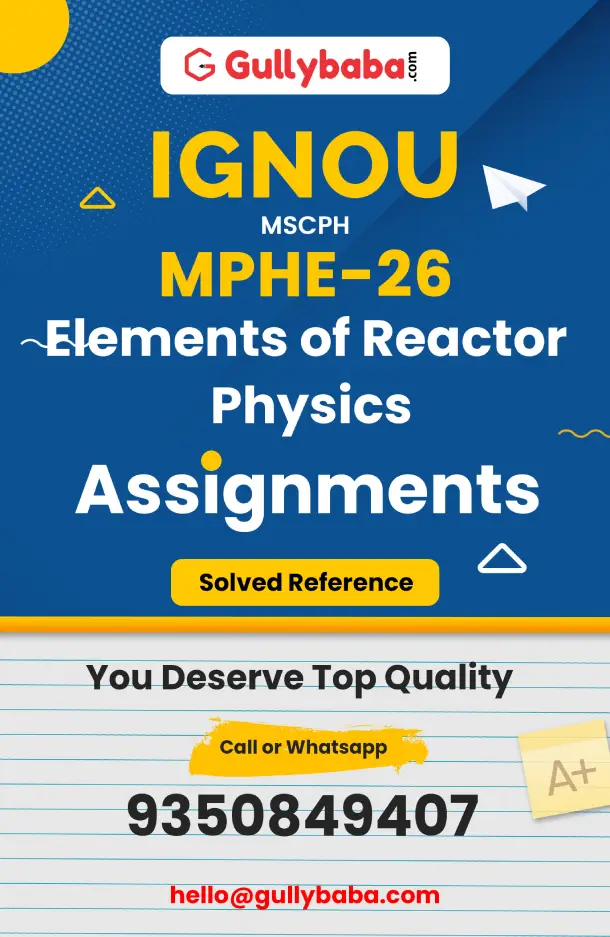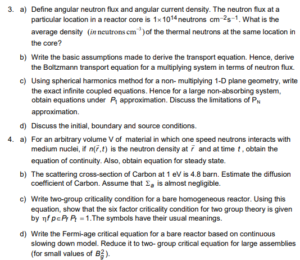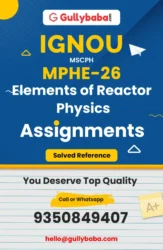PLEASE MATCH YOUR ASSIGNMENT QUESTIONS ACCORDING TO YOUR SESSION
IGNOU MPHE-26 (July 2024 – June 2025) Assignment Questions
PART A
b) Distinguish between prompt and delayed neutrons released in fission and discuss their importance.
c) The average number of neutrons produced per fission is 2.5. What would happen in a second, if every neutron released in fission causes another fission? Assume a generation time of 0.1 second.
d) i) What is the difference between slowing down density and flux of neutrons?
ii) If the reference neutron energy is 10 MeV, calculate the lethargy at 200 keV, and 0.025 eV?
e) Discuss the concept of breeding and doubling time and describe how abundant fertile actinides could be converted to excellent fissile actinides.
2. a) Define LAB and CM coordinate frames of reference used to study the kinematics of two- body collision. Obtain an expression of kinetic energy of a neutron after collision in the LAB system.
b) A 2.6 MeV neutron collides with hydrogen. Calculate the probability that the energy of neutron is within the energy range 0.63 and 0.75 MeV after collision? If a neutron loses 0.75 MeV in LAB system, what is the scattering angle in the CM system?
c) Derive an expression of average logarithmic energy decrement per collision (). Hence, show that for large mass number, it is independent of energy. Using this formula, plot average logarithmic energy decrement for different nuclides of mass number A.
d) If a 10 MeV neutron is collided with 238 U nuclide, compare the average energy loss of neuron if they undergo a) inelastic scattering and b) elastic scattering.
PART B












